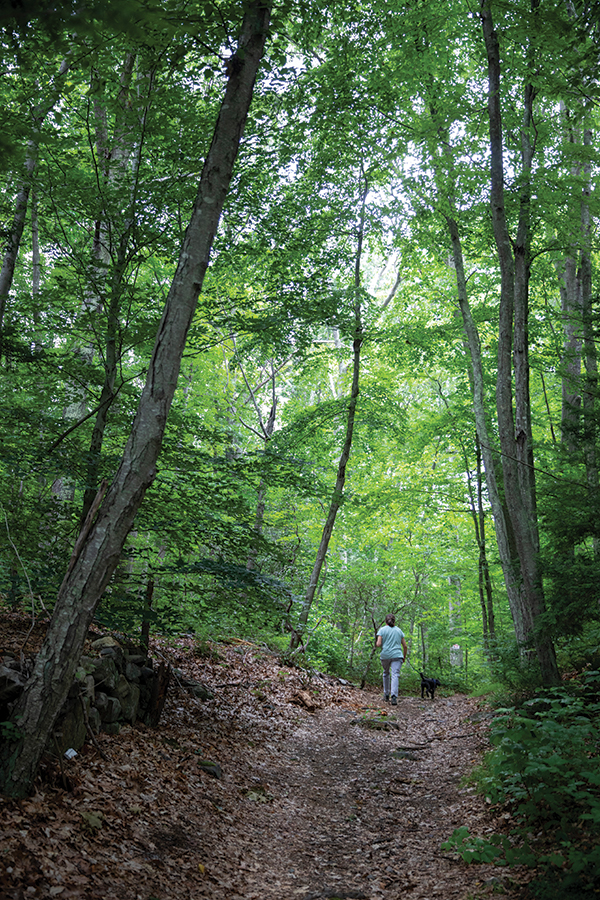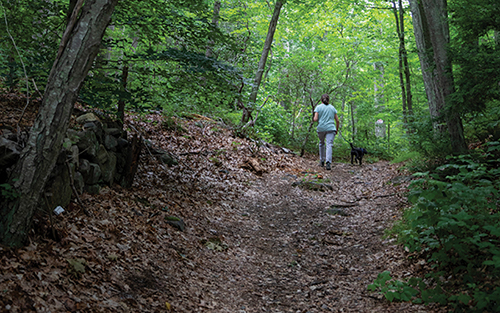
When despair for the world grows in me
and I wake in the night at the least sound
in fear of what my life and my children’s lives may be,
I go and lie down where the wood drake
rests in his beauty on the water, and the great heron feeds.
I come into the peace of wild things…
–Wendell Berry, 1968
 Everyone has a favorite place in nature. Ours is a rocky outcrop rising 300 feet above our village on the Connecticut River. Native Americans called these ledges above the stream valley Tomheganompakut, meaning “at the Tomahawk Rocks.” The hard, granitic schist was the source of their stone axes, or “Tomhegan.” Today, the 155-acre preserve is known as Swan Hill. You follow a winding path through fragrant black birch and sassafras woods to a footbridge across a rushing stream. A steep laurel hill leads up to the summit, where you stand amid wild blueberry and juniper bushes gazing eastward to the Connecticut River. In the distance is Haddam Island, with trees growing right down to the water.
Everyone has a favorite place in nature. Ours is a rocky outcrop rising 300 feet above our village on the Connecticut River. Native Americans called these ledges above the stream valley Tomheganompakut, meaning “at the Tomahawk Rocks.” The hard, granitic schist was the source of their stone axes, or “Tomhegan.” Today, the 155-acre preserve is known as Swan Hill. You follow a winding path through fragrant black birch and sassafras woods to a footbridge across a rushing stream. A steep laurel hill leads up to the summit, where you stand amid wild blueberry and juniper bushes gazing eastward to the Connecticut River. In the distance is Haddam Island, with trees growing right down to the water.
“Nature,” Thoreau said, “puts no question and answers none which we mortals ask,” yet she quiets the mind, nourishes the spirit, and makes us feel alive from the inside. These stories of the Connecticut Valley speak to the healing power of nature and the outdoors. In these difficult times, we are glad for the peace of wild places. “Keep close to nature’s heart,” John Muir said, “break clear away, once in awhile, and climb a mountain or spend a week in the woods. Wash your spirit clean.”

Image Credits: Christopher Zajac (photos). Getty Images, OLENA FEDOTOVA (leaf).

